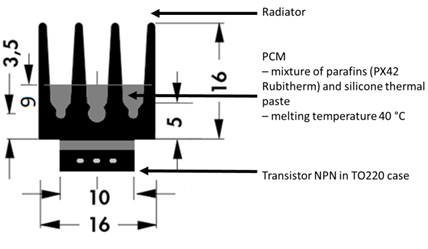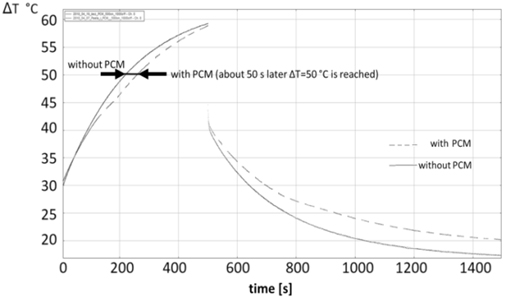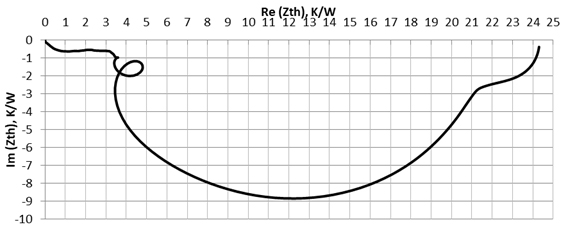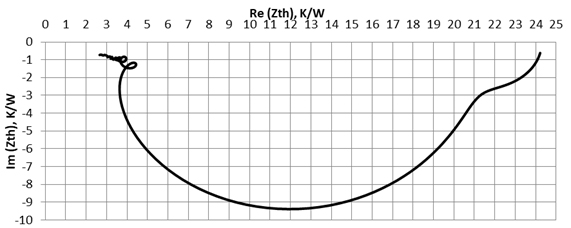Development and thermography measurements of modern heat sinks using phase change materials for electronics cooling
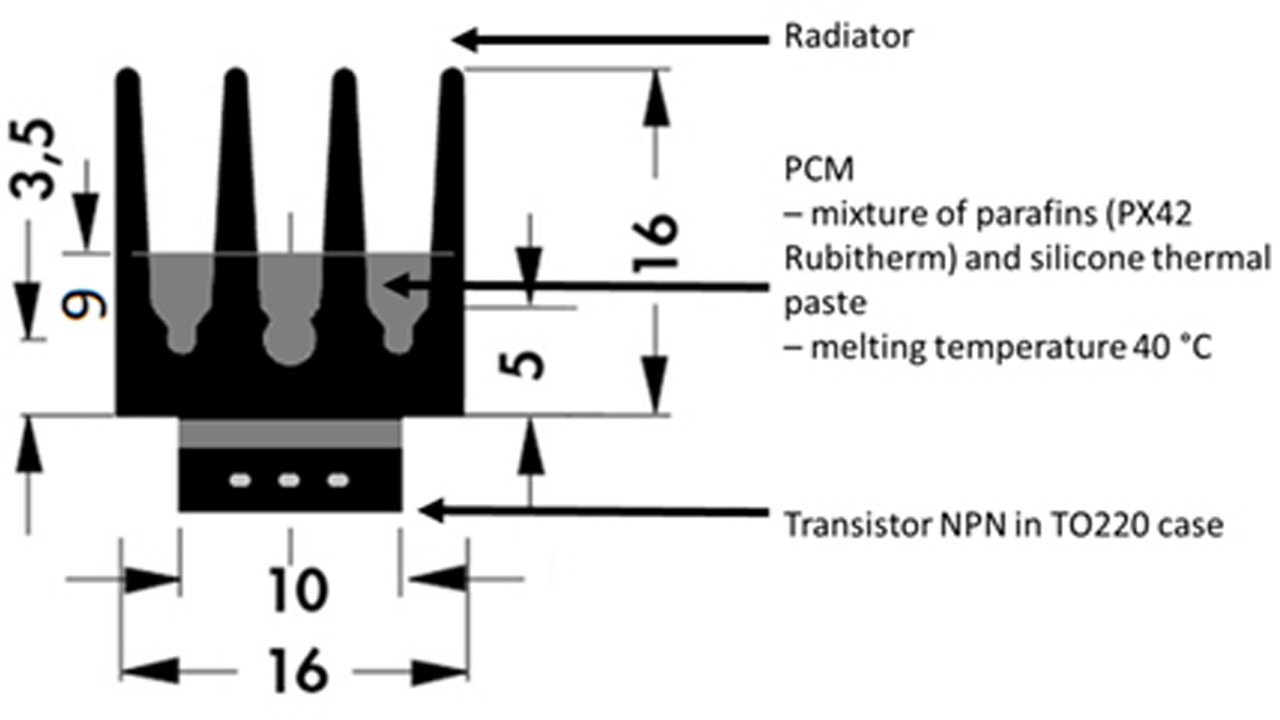
Introduction
Thermal management is one of the most important issues for electronic devices producers. The market of electronic devices grows very fast as well as power densities dissipated in electronic components. Dimensions of the devices and their packages are getting smaller. Electronic devices are operating well in specified range of temperature. Overheating of electronic elements leads to their shorter lifetime, malfunction (e.g. logic errors in microprocessors) or even immediate breakdown. As the result of above pointed facts, there is a need to design and produce advanced cooling systems that would fulfil the thermal management requirements in a superior way.
- Methods
Two types of cooling systems are used today: active and passive. The first one uses external power to move the cooling medium. Fans and pumps are widely used in air and liquid cooling systems. This enables to increase heat exchange thanks to the forced convection. It significantly increases the power dissipation in comparison with the second type of cooling systems – passive one. Such systems do not need any additional electrical power and are very reliable while no moving mechanical parts are used. Nevertheless heat transfer coefficient characterizing these cooling systems is usually a few times smaller. There are also cooling systems that use latent heat of phase change (mainly evaporation) can be used in electronics cooling. Heat pipes are for example widely used in heat spreaders, heat sinks etc. A great development of other phase change cooling systems can be observed.
- Results
Investigations prove that in some cooling applications phase change materials usage is advantageous. For example typical radiator can be filled with phase change materials. This helped to introduce a delay in temperature rise and to maintain lower temperature of a device longer time. In comparison with standard radiator, PCMs enhanced radiator enabled to maintain for about 50 s longer the device temperature lower than 50 °C. Decreasing device temperature leads to increase of its lifetime.
Heat pipes are one of the most efficient heat transporting devices on the market. Dynamic analysis of a heat pipe in start-up condition was done. The thermal response to a power step input was measured using T3Ster equipment. The measurement have revealed a small inflection point in the thermal response. Recording of thermal response enabled to move into frequency domain and to calculate the thermal impedance Nyquist plot. In order to simulate the phenomenon two models were proposed very simple analytical model consisting of two RC networks with a switch and a numerical model with six parallel stages of RCs. Both models enabled to obtain Nyquist plot describing the cooling setup close to plot obtained from the measurements.
- Conclusions
Further development of electronic devices strongly depends on cooling systems development. Phase change heat cooling and spreading systems have a great potential to fulfil constantly growing requirements. The construction of heat transfer models in modern phase change cooling systems is necessary. Phase change cooling systems have a nonlinearity that makes thermal modelling more difficult. Nevertheless modelling is necessary to develop methods for designing modern phase change cooling systems.
- Contact
- Publication
- M. Felczak, G. de Mey, B. Więcek, P. Chatzipanagiotou, V. Chatziathanasiou, “Dynamic thermal heat pipes analysis: Thermal impedance in start-up condition”, Microelectronics Journal 93 (2019) 104639
- M. Felczak, B. Więcek, “Thermal investigations of PCM enhanced electronics cooling”, Measurement Automation Monitoring, 2019, no. 02, vol. 65, ISSN 2450-2855

